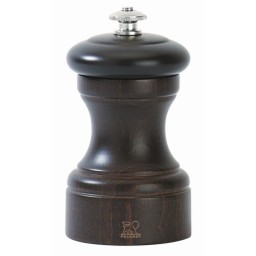
How Peugeot took a detour via the kitchen table
A detour via the kitchen table
The story of how Peugeot travelled from corset supports in dresses to motor cars is one of the better-known tales about the brand. However, a detour via the kitchen table that led to the development of a design classic and the acquisition of the famous lion logo is another enjoyable trip.
Both stories start in Sochaux, France where the family lived and where Jean-Pierre Peugeot had a business manufacturing water mills.
In 1810, The “Peugeot Frères” company was established, and along with Jean-Pierre II and Jean Frédéric Peugeot and another partner, Jacques Maillard-Salins, Jean Pequignot purchased a cereal mill at Sous Cratet in the Montbeliard region and set about converting it into a steel factory.
Once completed the new steel mill started to produce sheet steel and various hand tools, but the firm soon diversified into other areas. These included saws, saw blades, razors, sewing machines, roasting spits, spectacle frames, watch springs, clocks, garden furniture and the famous wire supports for crinoline dresses.
Amongst this ever increasing range, the inventive “Peugeot Frères” were most famous for their high-quality saw blades. They had developed a technique of individually cutting the teeth before casehardening the blade. Their process added a carbon-rich alloy to the steel surface for extra strength and meant the teeth stayed sharper for much longer.
Another diversification was into metal wheel spokes and wheels that were the first moves into the transportation business. These would lead to the establishment of the Peugeot bicycle brand, where their first bicycle was hand built in 1882 by Armand Peugeot. It was a penny-farthing called “Le Grand Bi”.
Soon after Armand became interested in the new world of the automobile and, following a meeting with Gottlieb Daimler, he became convinced of their potential as a business. The first Peugeot automobile, a three-wheeled, steam-powered car designed by Léon Serpollet, was produced in 1889.
However, before then in 1842, Jean Frédéric would use the blades and simple grinding system which they had used for a successful range of coffee bean grinders as the basis with which to create the classic pepper mill.
The design which has remained pretty consistent was straightforward. There was a container for the dried peppercorns, which had a chamber at its bottom containing two set rows of grinders. As the peppercorns passed through the chamber, they were first cracked and then finely milled.
The two rows of grinders were individually cut and casehardened using the special process used on the saw blades, giving the grinding mechanism an almost infinite life. Rotating the base or loosening the top screw of the new Peugeot pepper mill changed the ferocity of the grind from a loose crunchiness to a refined powder.
The innovation was perfectly timed as black pepper, which had been previously known as “black gold”, was becoming more readily available and cheaper; the result of the increased frequency of fast ships from south India and the new railway systems in both India and France.
 In the 1850s, the family chose the symbol of the lion as its trademark to reflect the strength of their company’s products and symbolising the durability, suppleness and quickness of their metal and steel. The lion also stood for the speed and aggressiveness of the Peugeot company.A lion trademark designed by Justin Blazer, a Montbeliard gold engraver was registered in1858.
In the 1850s, the family chose the symbol of the lion as its trademark to reflect the strength of their company’s products and symbolising the durability, suppleness and quickness of their metal and steel. The lion also stood for the speed and aggressiveness of the Peugeot company.A lion trademark designed by Justin Blazer, a Montbeliard gold engraver was registered in1858.
It was the perfect symbol for the pepper mills as it intimated that their grinding system was every bit as strong as the mighty animal’s jaws and, of course, it would prove to be a suitable icon for their future cars too.